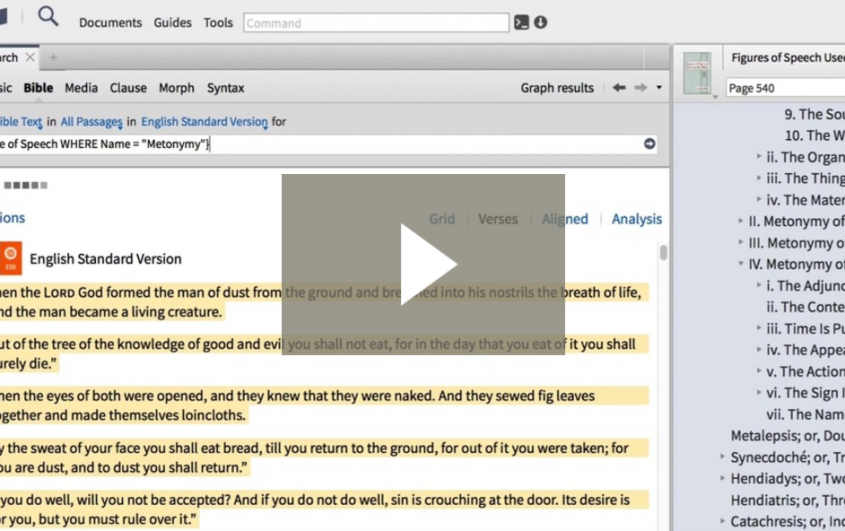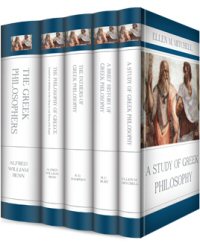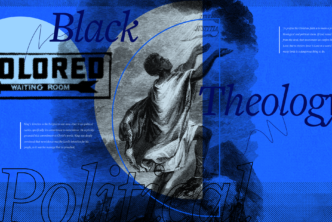How does Philo, the ancient Jewish philosopher, conceive of the origin of evil in each individual person compared to the Stoic understanding in which he operated?
A excellent point of comparison is Philo’s use of a “double trunk” or “double branch” metaphor, in which he suggests that there is a single root producing two opposing trunks of a tree. This metaphor, and the idea of internal rather than external vice and virtue, are also found in a few Stoic writers.
This is surprising, because it flies in the face of typical Stoic thinking. This makes the comparison even more interesting, and potentially fruitful.
Philo’s “Double Trunk”
And as time goes on, whenever we are about to become adolescents, coming out of the age of childhood, immediately [we] produce a double trunk from one root—virtue and vice—and while we form an apprehension of the two, we choose one of them: the good-natured choose virtue, and the opposite choose vice (Congr. 82).
He then offers an allegorical commentary on Abraham’s relationship with Hagar and Sarah. In this commentary, Philo charts the growth of Abraham (i.e. the exemplary Stoic wise man), from a childhood ruled by his passions, to an adulthood free of error.
A defining choice presents itself to the adolescent person: one can choose either virtue (ἀρετή) or vice (κακία). These are synonymous with good and evil, and are represented in Philo’s metaphor of a double trunk (τὸ δίδυμον στέλεχος) growing out of one root (ἐκ μιὰς … ῥίζης). The metaphor is employed again in terms of a “branch” elsewhere (Ebr. 8b), demonstrating the importance of “choice” in Philo’s consideration of the moral formation of human beings.
Interestingly, the image of a double branch recurs in other contexts where vice and virtue are not explicit, but implicit in the additional metaphors that Philo utilizes. For example, in De Agricultura 30 the double branch is mentioned in a comparison between a shepherd and a cattle-feeder. These two figures represent, respectively, lesser (φαῦλος) and superior (σπουδαῖος) persons.
Quod Deterius 108 is another example, where the simple laborer (ἐργάτης) and the true farmer (γεωργός) are contrasted, again using the branch metaphor (Det. 104; cf. 109).

These passages generate important questions regarding Philo’s view of the relationship between vice and virtue. The great Alexandrian philosopher is at a crux: on the one hand, Philo agrees that virtue and vice are mutually exclusive; human agents cannot “put off or put on both virtue and vice at the same time—when someone might take off the one, he must, taking it up, assume the opposite” (Ebr. 7). On the other hand, Philo states that both vice and virtue are planted within each person and each person is tasked with choosing which “branch” to cultivate in their own life (Ebr. 7, 9; Congr. 82; Det. 105, 108).
This has serious implications for Philo’s view of God. Although God is absolute in everything (e.g., Her. 188), God’s chooses to provide humans with a “mixed” nature, thus allowing them to choose their own path (cf. Spec. 1.214; Deus 47-48).
The crux in Philo’s thinking raising an important question, which is the subject of inquiry in this article: how does Philo’s conception of the origin of evil in each individual person compare to the Stoic understanding? This question is significant, because Philo’s writings exhibit a strong indebtedness to Stoic philosophy, which he attempts to harmonize with his own biblical (i.e. 1st century Jewish) worldview.
Major Stoic thinkers on vice and virtue
What is readily apparent when reading the Stoics, however, is that Philo’s perception of the origins of virtue and vice is distinct. He does not take the course of some of Stoicism’s preeminent thinkers, including Cleanthes, Chrysippus, Diogenes Laertius, Cicero and Seneca.
According to Cleanthes (ca. 330–230 BC), there was no commonality between virtue and vice and that nature gave only seeds for virtue (SVF I:566).
For Chrysippus (279–206 BC), a student of Cleanthes, vice did not arise from within man and destroy him. Rather, there were external forces such a bad company (κατήχασις) and physical trials (πράγματα φύσεως) that caused human degradation (SVF III:229a).
Diogenes Laertius (ca. 3rd century AD) agrees: “the logical animal is sometimes distorted through the persuasions of outside trials (πράγματα) and sometimes through association with bad companions (κατήχασις)” (7.89, SVF III:228).
In short, vice is external, virtue is internal.
 Stoics outside the Party Line
Stoics outside the Party Line
There are, however, notable examples of Stoics who departed from the typical view of vice, and saw it as internal to the human agent. For example, the poet Menander (341–290 BC) writes:
Oh Parmenes, there is nothing good in life, just as a tree is growing from one root, but it also produces evil right next to good, Nature brings forth good out of evil (Fragment 407).
Menander indicates here that good and evil are both products of conflicting natures arising from a single root (δένδρον ἐκ ῥίζης μιᾶς). Not only does the tree produce good and evil, it does so right from the beginning; there is no indication of neutral period of development.
Notably, this very passage was read by Themistius, the great philosopher and rhetorician (317–390 AD), in a manner that accords with Philo:
It seems that each of the human goods has been covered with danger, that there is nothing unmixed with the opposite, and one of the comic poets correctly says, “There is nothing good in life, just as a tree growing from one root, evil always springs forth next to it.” This is the thing that is destroying many, for they are not able to easily take up the better from the base things. (Orat. 22).
Posidonius (135–51 BC) is another example. Writing just before the time of Philo, he contradicted previous Stoic doctrine with respect to the nature of man, particularly concerning the origin of vice. As Galen records:
Posidonius does not think that vice comes from outside of man without having a root (ῥίζα) in our own souls, from which it shoots forth (βλαστάω) and grows, but the extreme opposite: for he thinks there is a seed of vice in us ourselves. And we all do not need to flee from the worst so much as to pursue those who are pruning and prevent the growth of vice within us. For it is not, as the Stoics say, that the entirety of vice comes into our minds from outside, but the worst of men have the greater part of vice from themselves, and only a very small part of the influence comes from the outside (Frag 423 lns. 58–65).
On the question of the origin of evil, Posidonius sees vice coexisting with virtue internally, growing from a single root. Each person faces a decision: they can choose the better course and prune the worse, or they can allow the growth of vice to choke out the life of the better.
On the question of the development of evil, Posidonius is yet again aligned with Philo: children are ruled entirely by their passions.
Notably, this view is reflected in Chrysippus, who saw children as virtuous when simplistic. As Galen writes:
Chrysippus naturally has difficulties with the origin of vice; he can’t say what its cause is, nor the manner of its constitutions, and is incapable of discovering how children err; for all of which Posidonius too reasonably censures and refutes him. For if it were really true that children had a natural affinity to morality right from the beginning, vice could not arise internally from themselves, but would have come to them from an external source only (Kidd, Fragment F169C).
Philo agrees that children are ruled by passions (Congr. 81) and that they begin having the self-control to choose in adolescence. He does, however, admit that many will still choose the worse (Congr. 82).
Perhaps surprisingly, the eminent Plutarch (AD 46–120) reflects a position shared with Posidonius:
But all of these men agree that virtue is a particular power of the governing portion (ἡγεμονικός, cf. Philo Ebr. 8) of the soul and a faculty engendered by reason (λόγος), or rather, that reason which is itself agreeing with virtue and is firm and unshaken. They even think that the passion-driven and non-reasoning part of the soul is not distinguished from the rational by any difference of its nature, but is the same part, which, indeed, they call “intelligence” (διάνοια) and the governing part (ἡγεμονικός); it is, they say, transformed and changes both during its emotional states and in the alterations brought about according to an acquired disposition or condition and thus becomes both vice and virtue (SVF I:202).
Here, although Plutarch does not employ the image of a double trunk to depict virtue and vice, he agrees that they cannot be separated in their origin—both are internal to humankind.
This is a significant step away from the typical Stoic position, which held that nature (or the gods) had predisposed humankind towards virtue alone in its act of planting seeds within individuals, seeds that could only be turned to malicious ends due to external forces.
Why the Comparison Matters
What value has the above comparison brought to our understanding both of Philo and of the Stoics? What does it really matter to us today that Philo and a few of the (renegade?) Stoics utilized the metaphor of a double trunk/branch, and that vice and virtue were understood as coming from within a person rather than without? I suggest that there are two observations we can make at this point:
- Although the “double trunk” metaphor appears in both Philo and Menander, there is no reason to suppose that one borrowed from the other, or that they did not come to the imagery on their own. There is too much speculation involved to make a case either way. However, the differences between the authors should be exploited to gain further nuance in our understanding of both the Stoics and Philo.
- Ancient thinkers were concerned to plumb the depths of human morality, which necessitated answering the question of the origin of evil. Both the origin and development of vice and virtue, whether from within or outside of human agents, was a major concern, but each school arrived at different answers. The question is, why? The hope of comparison is gaining ground on such questions that might not be achieved otherwise.
- Within the Stoic school there was disagreement on even the most fundamental issues. Each writer’s nuanced position warrants study on his own terms. Just as we now recognize that there was no monolithic entity called “Judaism” but rather a fragmented collection of ideas and writings in the Second Temple period, so is the case with Stoicism.
The study above has only touched the surface, by juxtaposing one Jewish philosopher influenced by Stoicism, and a handful of other bona fide Stoics, at one possible point of comparison. A fascinating study might compare Philo with just one member of the Stoic school, thus allowing for a deeper analysis of their similarities and differences.
Study Philo and other ancient Jewish texts in depth with Joel Willitts and Logos Mobile Ed. theLAB readers receive 20% off! Get the course for only $303.99 using coupon code: LABWillitts20.
You can also get the entire 1,140 volume Perseus Classics Collection for free on Logos, including Greek and Latin grammars and commentaries.

Bibliography
Arnim, Hans von. Stoicorum veterum fragmenta vols 1-4. Stoicorum Veterum Fragmenta. Stutgardiae: in aed. B.G. Teubneri (1964-).
Armstrong, Arthur Hilary. Plotinus Ennead vol 3. Cambridge: Harvard, 1999.
Geljon, Albert-Kees and David T. Runia. On Cultivation. Leiden: Brill, 2013.
Hoek, Annewies van den. Clement of Alexandria and his use of Philo in the Stromateis: an Early Christian Reshaping of a Jewish Model. Leiden: Brill, 1988.
Jaeger, Werner. Two Rediscovered works of Ancient Christian Literature: Gregory of Nyssa and Macarius. Leiden: Brill, 1964.
Konstan, David. “Of Two Minds: Philo on Cultivation” in Runia, David T., Gregory E. Sterling, David Winston, and Ronald R. Cox. 2010. The Studia Philonica annual: studies in Hellenistic Judaism. Volume XXII. Atlanta: Society of Biblical Literature 2010.
Long, A. A. Hellenistic philosophy; Stoics, Epicureans, Sceptics. New York: Scribner. 1974.
Pohlenz, Max. Die Stoa vol. 1-2. Göttingen: Vandenhoeck & Ruprecht, 1978.










